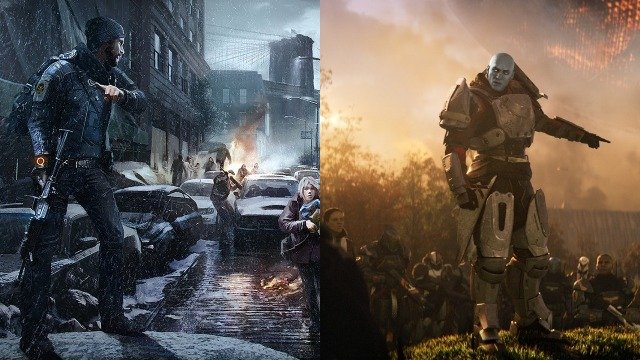Destiny 2 and The Division are two very different games with the same core gameplay principle. Both are multiplayer shooters that allow players to team up against AI-controlled enemies, and both heavily involve grinding for loot. With Destiny 2 players getting more and more fed-up with Bungie’s management of the game, though, The Division might be the closest alternative to Destiny that console players will find.
Comparing Destiny 2 and The Division is tough. Destiny 2 has only been out a few months, while The Division has had almost two years of content and updates added. Below we’ll break down the advantages and disadvantages of both games in the areas that seem most important to fans of both franchises.
Destiny 2 vs. The Division: Story
This is one area that Destiny 2 destroys The Division. Unlike The Division, Destiny 2 has the advantage of having a pre-established universe at its offset. If you’re a returning player, you already care about The Tower and know about the history of Earth and The Golden Age, and the fall of mankind.
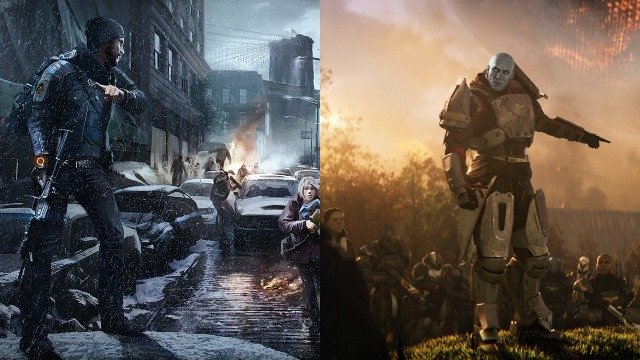
Though Destiny has issues with its storytelling, with a lot of the finer details of the universe being vague, at least it’s engaging. The Division‘s plot centers around a virus planted on banknotes sweeping New York City and Manhattan being placed under quarantine. Another handicap The Division faces in storytelling is that it’s limited to the present/near-future. Ubisoft couldn’t get too crazy in their approach, so it feels a little more generic overall than Destiny 2.
Destiny 2 vs. The Division: Weapons, Armor, and Gear
Both Destiny 2 and The Division are heavily gear-oriented. Your primary goal in both games is to get more powerful gear so that you can beat tougher parts, so you can get more powerful gear, and repeat. I would say that Destiny 2‘s Exotics are more exciting to obtain than those in The Division and that overall weapon and armor design is more varied.
Item variety is another area that The Division faces issues in because of its real-world roots. However, I think the customization aspects of The Division‘s weapons trumps Destiny 2‘s by far. You can use attachments like scopes, grips, and silencers to modify your weapons in The Division and they change their physical appearance in the game. This lets you adjust your weapons to suit your playstyle in a much more intricate way than Destiny 2 allows you to. Oh yeah, and there’s a ton of shaders for guns, and they’re not one-time use like Destiny 2‘s.
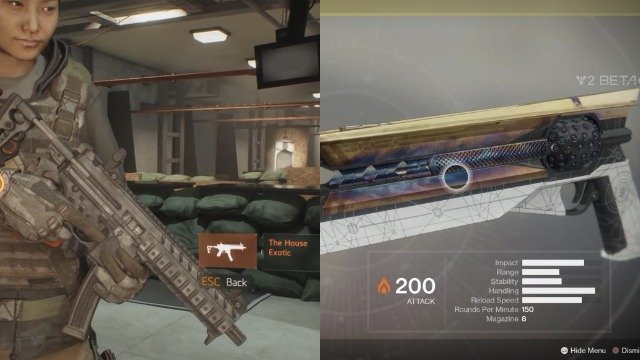
Armor in The Division is unfortunately much lamer looking than in Destiny. Instead of awesome battle armor, you get a bunch of pretty run-of-the-mill looking body armor, backpacks, kneepads, and holsters. They do change physical appearance on your character model, which is nice, but they’re just not as cool looking. The more plentiful cosmetic clothing items in The Division somewhat make up for the lameness of the equipment, though.
Destiny 2 vs. The Division: Gameplay
These two games have a similar concept at their core, but they play very differently. Destiny 2 is a first-person shooter, and places emphasis on tight gunplay and precision aiming. The Division uses a third-person camera and is a lot more cover and obstacle-based.
Your preference for one or the other will likely come down to whether you’d rather play a more action-packed game or a more tactical/stealth-based one. Destiny 2 is excellent if you just love blasting away enemies with a host of different weapons and abilities, but there’s very little tactical planning necessary. You usually are best off just picking your most potent firearms and armor and charging guns blazing into the fray.
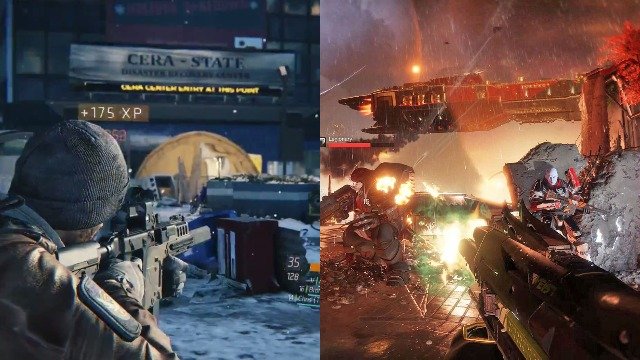
The Division is a lot more measured in its gunplay, and positioning and cover are more important than how powerful your gear is. Enemies are a lot more resilient to damage and have more health than the ones in Destiny 2, to the point where the game has been criticized for foes being bullet sponges. If you want a game where you have to plan your approach and give more thought to what weapons you have equipped, The Division is for you. If you want a more twitchy shooter that rewards guile, then you’ll want to check out Destiny 2.
Destiny 2 vs. The Division: Co-Op Multiplayer
Both of these games allow you to team up with friends to tackle player-vs-enemy content. Destiny 2 allows you to team up with three player fireteams for public events and strikes, and six-player teams for raids. The thing I hate about Destiny 2‘s approach to co-op is that it feels wholly unnecessary and forced. When you’re playing the campaign, there’s no real incentive to form a fireteam unless you’re playing with your friends. Throughout the story the narrative has your Guardian being the savior and having friends tag along apparently isn’t part of the canon.
Strikes in Destiny 2 aren’t too bad because at least there’s decent matchmaking. However, raid content feels artificially locked behind fireteam requirements. If I can solo the rest of the game, why should I need all six fireteam slots filled to run one of the raids? Why is there no matchmaking for raids? It’s not like you can use voice chat outside of fireteams, so there’s no way to actually make friends or group up in one of the social hubs in the game.
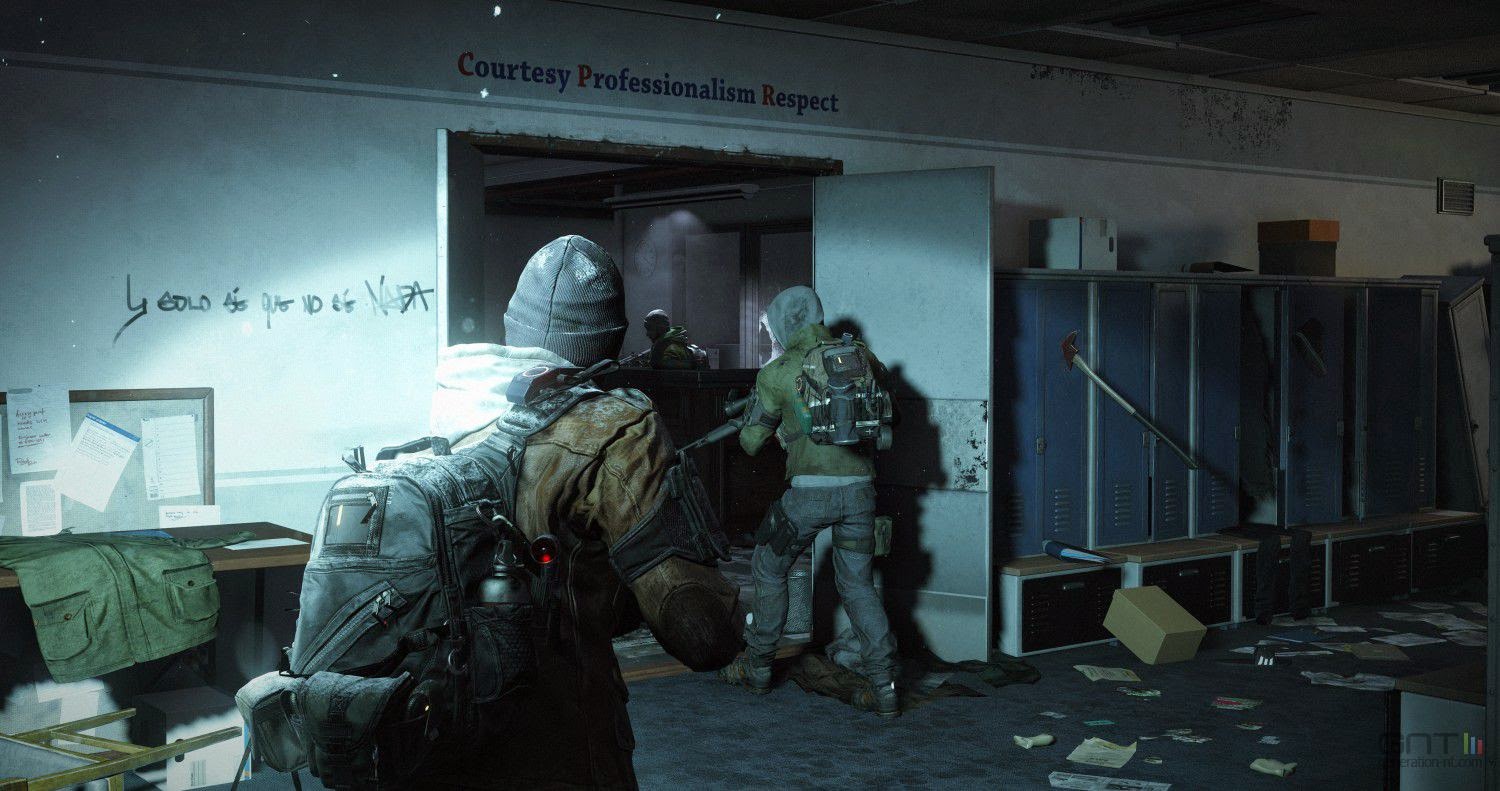
Additionally, you can see other players throughout your travels in Destiny 2, but you can’t actually communicate with them outside of a limited amount of emotes. Having major events and modes in the game rely on multiplayer without actually having any sort of social functionality outside of the fireteam system doesn’t make sense at all.
The Division handles co-op multiplayer a little differently. Everything in the game is co-op, and you can choose to leave settings open where anyone can join your party. You can do this on the main map of Manhattan, and travel with up to three other people for the whole game, or you can choose only to use matchmaking when you go on a mission.
I typically travel the main map alone but pair up with players for missions. The enemies scale to the number of players in your party, which makes each task a bit harder, but since the game is more cover-oriented, it’s a lot easier if at least one other squadmate has your back. Also, you can choose to turn on team VOIP or proximity VOIP so you can actually talk to the people you meet in-game.
Destiny 2 vs. The Division: Player-vs-Player Multiplayer
PvP play is an area that The Division has Destiny 2 and a lot of other games beat. Destiny 2 has the Crucible which is a pretty run of the mill FPS multiplayer mode where two teams of four can duke it out in a few different game modes. You can take and hold control points in Control. There’s a team deathmatch mode with an eight life pool for each team called Survival. Clash is a regular old team deathmatch mode, Supremacy has you killing foes and collecting their crests for points and Countdown centers around a group of attackers attempting to detonate an explosive in a specific area while defenders try and stop them.
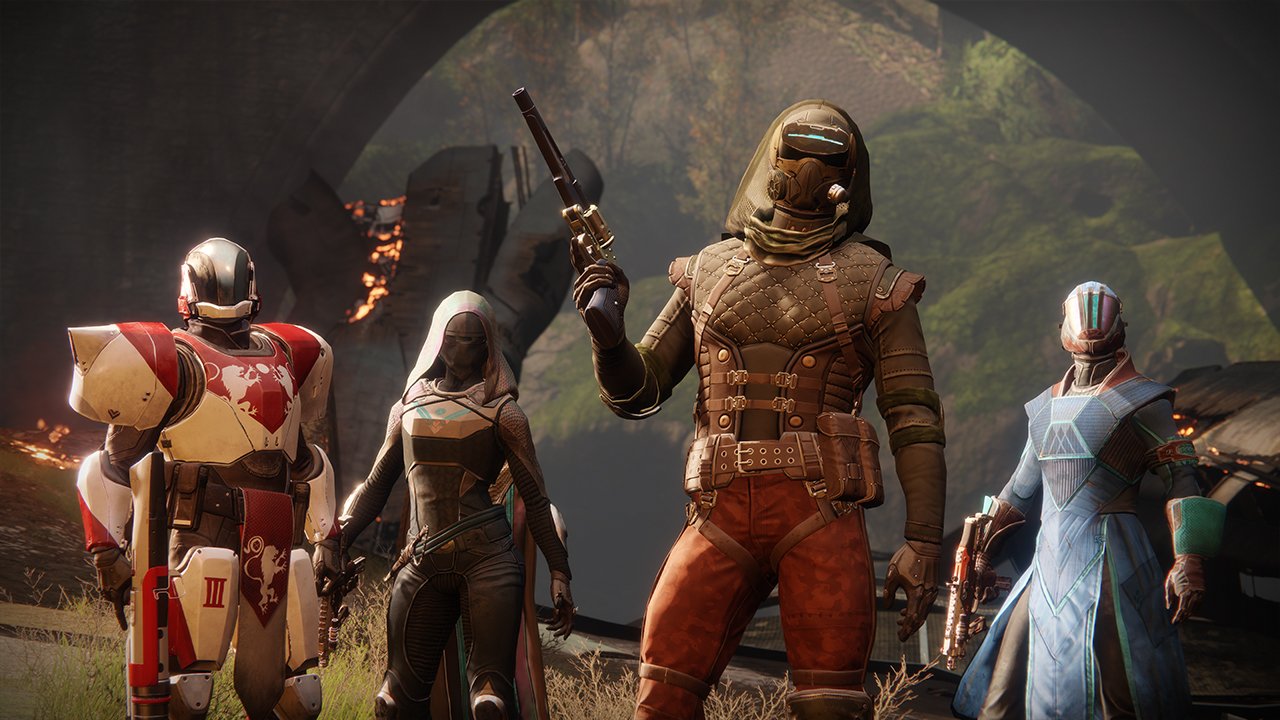
The Division has a whole area of the game dedicated just to PvP: The Dark Zone. This is the only area of the game where PvP is allowed, but there are some stipulations. If you kill another player, you’re marked as a Rogue Agent, and flagged for other players to hunt down. A lot of the best gear in the game is found in The Dark Zone, so if you see a player carrying items that haven’t been decontaminated yet, it can be worth it to kill them even if you risk death yourself by being flagged.
This area also contains plenty of AI-controlled enemies, so you’re encouraged to team up with other players to survive. However, these players can easily let you do all the hard work and turn on you when it’s time to extract the high-end items you can find here. Unlike Destiny 2, all the content in The Dark Zone can also be done solo if you choose to do so. The balance between PvP and PvE in The Dark Zone makes for a lot of fun and unpredictable gameplay.
Destiny 2 vs. The Division: Microtransactions
Destiny 2 has come under a lot of fire for its increased focus on microtransactions compared to the original game. The recent Dawning event, in particular, is an example of Bungie focusing too heavily on introducing new microtransactions. With the first Destiny 2 DLC, Curse of Osiris being such a disappointment, many Destiny players are feeling jaded when it comes to the future of the game.
The Division has its share of microtransactions as well, but they seem fairer and less tied into the game. Like Destiny 2 you can get cosmetic items like shaders and clothing via loot crates, you can purchase with premium currency. However, unlike Destiny 2, The Division‘s cosmetics are just that. There’s no gameplay advantage to be gained from the new clothes you can buy for your agent or the new camo you can buy for your gun.
You can earn crates in-game in The Division just like you can Bright Engrams in Destiny 2, but there’s one big difference in items between the two games that’s worth mentioning. The Division‘s shaders are infinite use compared the single-use system in Destiny 2. You get a camo or clothing item once, and you own it forever.
So How is The Division a Better Destiny than Destiny 2?
As I said in the intro, Destiny 2 and The Division are two very different games. However, at their core, they’re both shooter MMOs that focused around providing a fun experience for friends or complete strangers to fight AI and each other and grind for loot. Destiny 2 is one of the most anti-social massively multiplayer games I’ve ever seen, to the point where a lot of players turn to external tools and message boards to actually find people to play with. There’s no reward for interaction with others in most of the game except for some of the significant endgame content where you’re forced to find others to play with or not play at all.
The Division, on the other hand, makes finding other people to play with in any part of the game extremely easy and gives you the tools to have as much or as little contact with other players as you want. You can solo the whole game or play it all co-op. Destiny 2 has The Division beat when it comes to worldbuilding and gunplay, but doesn’t compare when it comes to actually being a multiplayer game. To be fair The Division has had almost two years to get where it’s at, and it had a rough start. Hopefully, when Destiny 2 is coming up on its second birthday, we’ll have a lot more positive things to say about it. As it stands now, though, the direction, Bungie continues to take Destiny 2 in seems to be driving players from the game instead of bringing them together.
